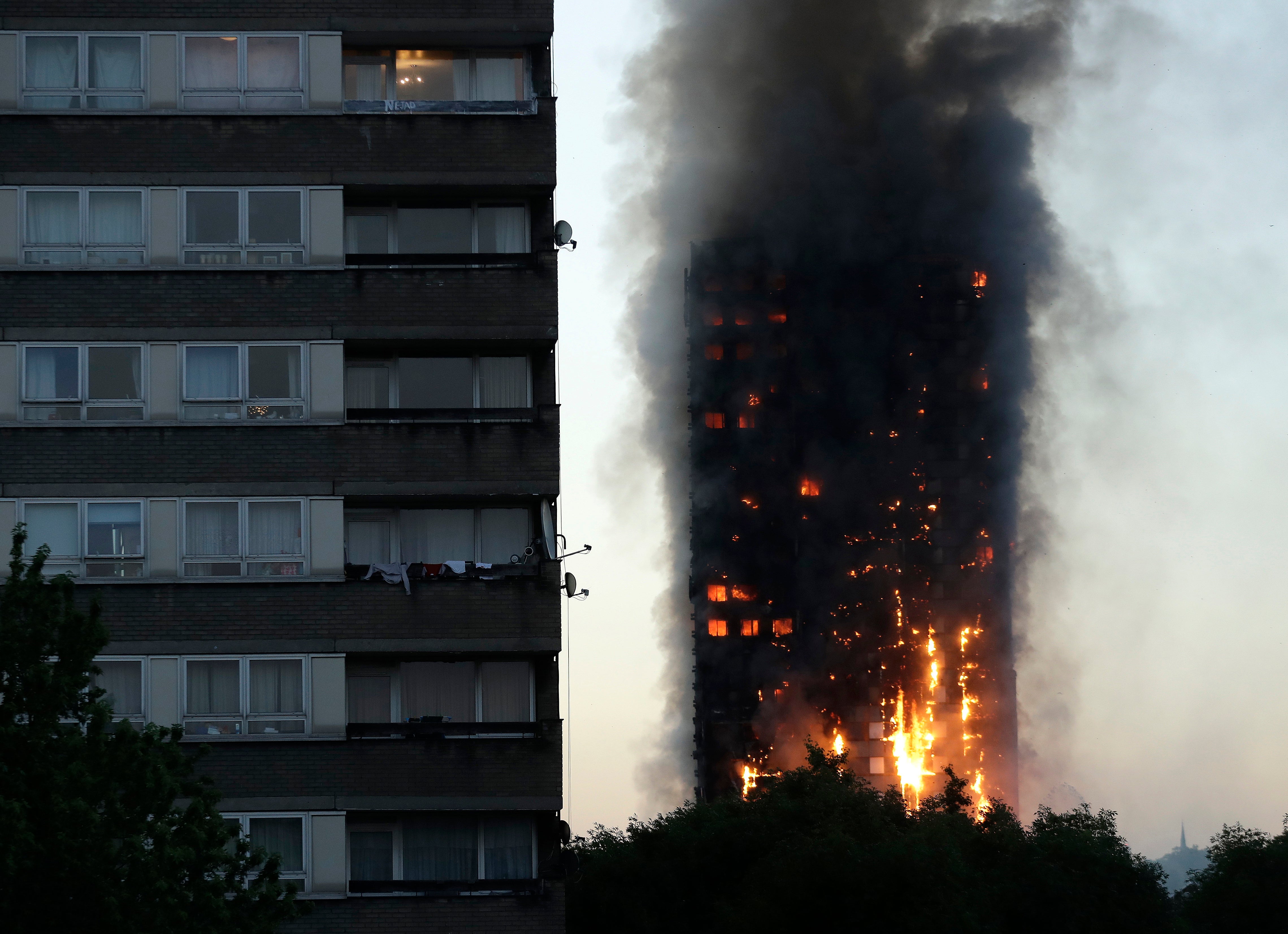Grenfell fire inquiry: What you need to know as final report is released
The “landmark” final inquiry report will enable prosecutors to pursue justice

Your support helps us to tell the story
From reproductive rights to climate change to Big Tech, The Independent is on the ground when the story is developing. Whether it's investigating the financials of Elon Musk's pro-Trump PAC or producing our latest documentary, 'The A Word', which shines a light on the American women fighting for reproductive rights, we know how important it is to parse out the facts from the messaging.
At such a critical moment in US history, we need reporters on the ground. Your donation allows us to keep sending journalists to speak to both sides of the story.
The Independent is trusted by Americans across the entire political spectrum. And unlike many other quality news outlets, we choose not to lock Americans out of our reporting and analysis with paywalls. We believe quality journalism should be available to everyone, paid for by those who can afford it.
Your support makes all the difference.Seven years since the Grenfell Tower fire tragedy, the final report into the blaze that claimed 72 lives is due to be released.
The long-awaited document will present findings on how the fire was able to spread so quickly across the West London building, after a 2019 report pointed to combustible cladding as a key factor. It is due to be made public at 11am on Wednesday.
It is the culmination of a long and difficult campaign by families and friends of those who were killed. They say the inquiry findings must present a “landmark report” as they search for answers as to how their lives were changed so dramatically.
Inquiry chairman Sir Martin Moore-Bick is expected to lay out detailed findings regarding the role of construction firms that supplied materials to the building, the local authority, the fire service, and the government.

Campaigners say the report must now give police and prosecutors a new lease to pursue justice for errors that may have been made before and during the blaze. The Crown Prosecution Service has said it will decide whether to pursue prosecutions after the findings are published.
Here’s everything you need to know as the landmark report is released:
What happened at the Grenfell Tower fire?
On June 14, 2017, a fire broke at the high-rise Grenfell Tower in North Kensington, West London. What began as a standard electrical fire caused by a faulty fridge soon became the worst structural fire in Britain since the Blitz during WWII.
As fire ripped up the side of the massive building, overwhelming fire crew at the scene, residents scrambled to survive. The fire began in the middle of the night, just before 1am, meaning many were still sleeping as the flames approached.
During the blaze, 70 people lost their lives, with a further two dying in hospital. With the help of fire crew, 223 were able to escape, but the building was completely destroyed.

It was a combination of faults that led to the Grenfell disaster, an inquiry would later find. Gaps around window openings filled with combustable foam would allow the flames to quickly spread outside. This would have been manageable, if not for the sub-standard cladding that had been installed on the building between 2015 and 2016.
This was made from aluminium composite material: two sheets of aluminium, bound by a highly-combustible polyethylene filler. It was this material that allowed the blaze to work its way up the building, making its way into resident’s homes as it went.
More than 250 firefighters and 70 fire engines from across London were eventually called to the blaze. It spread for 60 hours, with those on the ground unable to do anything.
How did we get to the final report?
In subsequent years, the tragedy has been subject to police investigations, coroner’s inquests, and a lengthy public inquiry. This inquiry was ordered by then-prime minister Theresa May on the day following the fire. The first phase report was released in 2019, presenting many recommendations and findings.
Amongst them was the conclusion that the resident of the flat where the fire started was not at fault, despite speculation from the media shortly after the blaze. It also showed that the cladding used on the building exterior was the main cause of the fire’s rapid spread.

It also said that firefighters showed “courage and devotion to duty” during the event. However, the London Fire Brigade’s “stay put” strategy was criticised as unworkable in the circumstances, and found to have cost lives.
The second phase of the inquiry opened in January 2020. It will reveal 200,000 unseen documents, including phone transcriptions, emails and commercial agreements, shining a light on circumstances around the events.
Amongst the issues under scrutiny by the panel is the 2015/16 refurbishment of the tower, the cladding material used, central and local government responses, and evidence from survivors and the bereaved.
Join our commenting forum
Join thought-provoking conversations, follow other Independent readers and see their replies
Comments